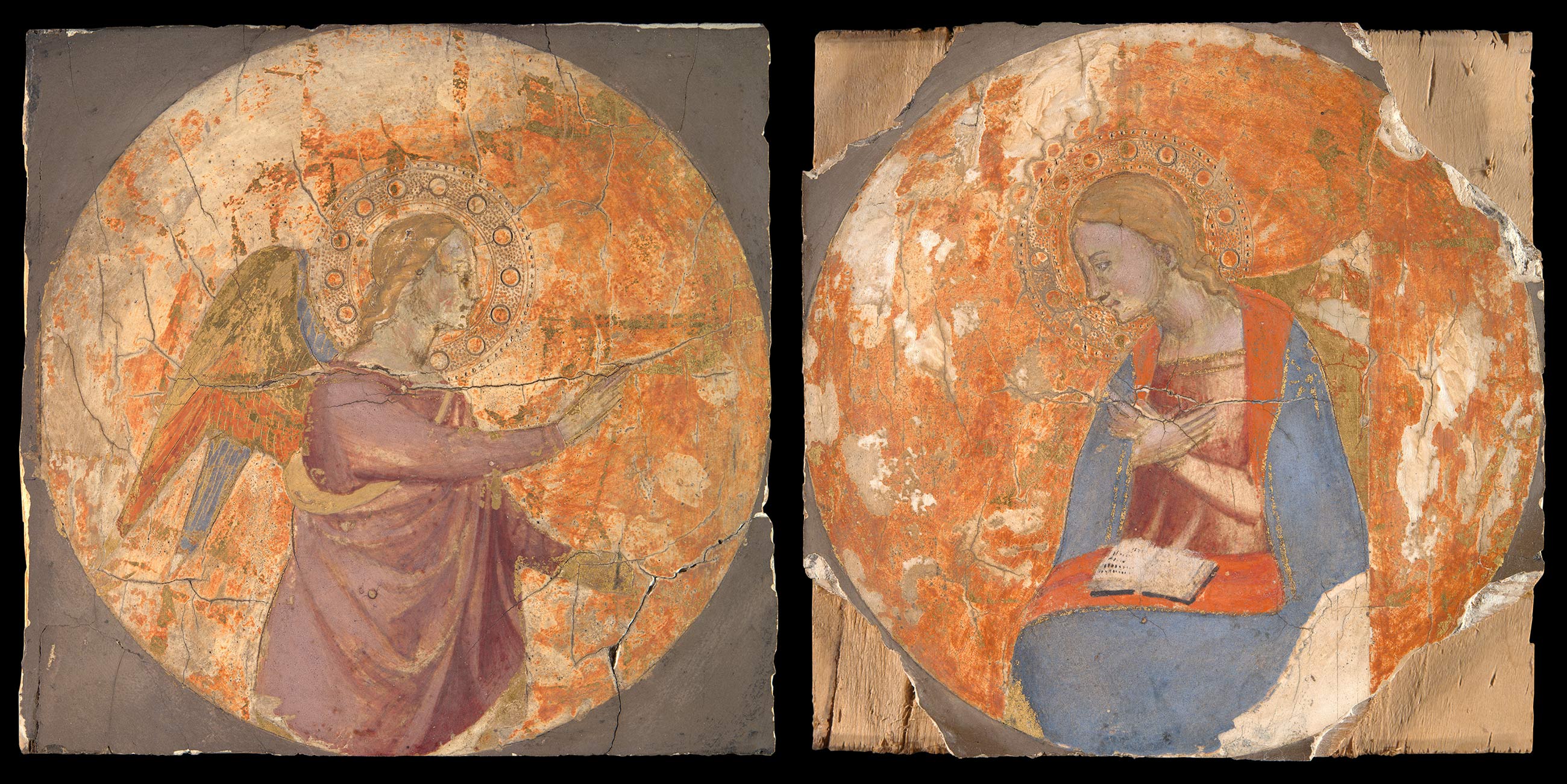View the Annunciatory Angel and the Virgin Annunciate in the Yale University Art Gallery’s online collection.
For more on these paintings, see Cenni di Francesco di Ser Cenni, The Adoration of the Magi, One of Three Fragments from a Folding Triptych.
The Annunciatory Angel and the Virgin Annunciate are both painted on panels of a horizontal grain, 5 millimeters thick, excised from their original context as cross-shaped fragments and mounted onto later panel supports of a vertical grain, 8 millimeters thick. The Angel measures 13.5 by 13.6 centimeters overall, excluding a 3-millimeter-wide capping strip applied to the left edge of the panel and integrated with the paint surface. The Virgin measures 13.4 by 13.6 centimeters overall. The corners of the Angel were filled with plaster to complete a rectangular shape, and the entire spandrel area outside the roundel was painted a gray-brown color to mask these fills. The Virgin had been treated in the same fashion, but a cleaning in 1968 removed the plaster fills at the corners. On the reverse of the auxiliary support of the Angel fragment is painted in black: 143.M; a similar inscription on the reverse of the Virgin reads: 157.M.
The gilding and paint surface of the Angel roundel is considerably more damaged than that of the Virgin. The flesh tones of the Angel have been nearly obliterated by abrasion, and the gold has been worn down to the bolus and gesso preparatory layers. The Angel’s rose-colored cloak is largely intact, its sensitive modeling in shadow unimpaired, and passages of the red, blue, and white glazing on the Angel’s wings are preserved. The gold ground of the Virgin roundel has been effaced, but the gold back of her throne is pristine. The figure is largely undamaged except for a total loss of pigment at the bottom right of the blue cloak.
